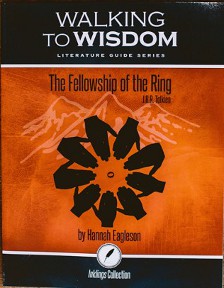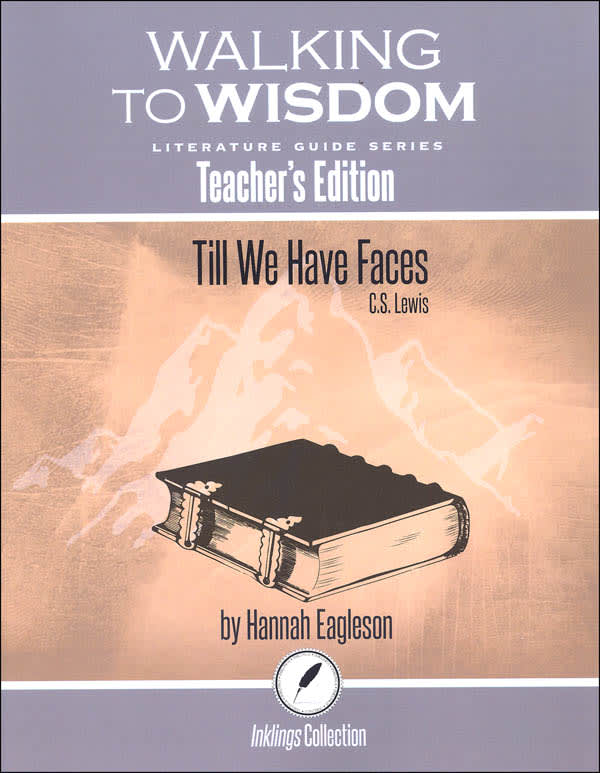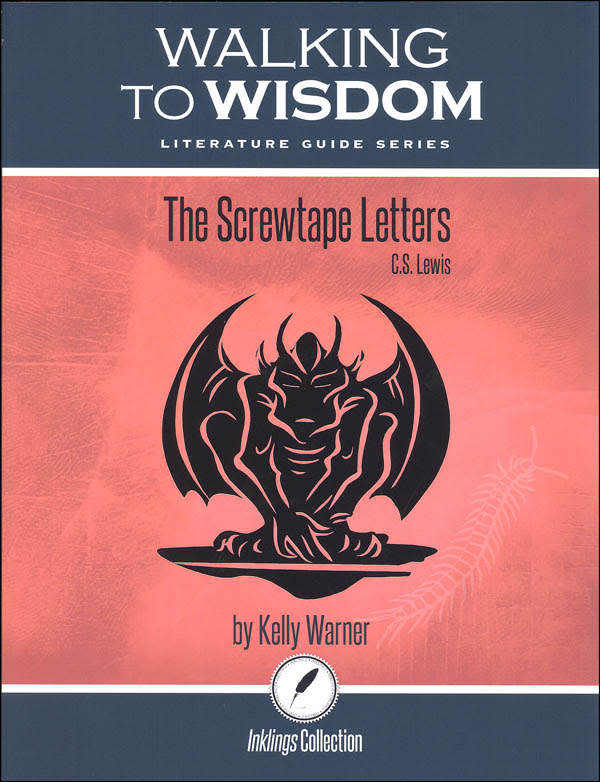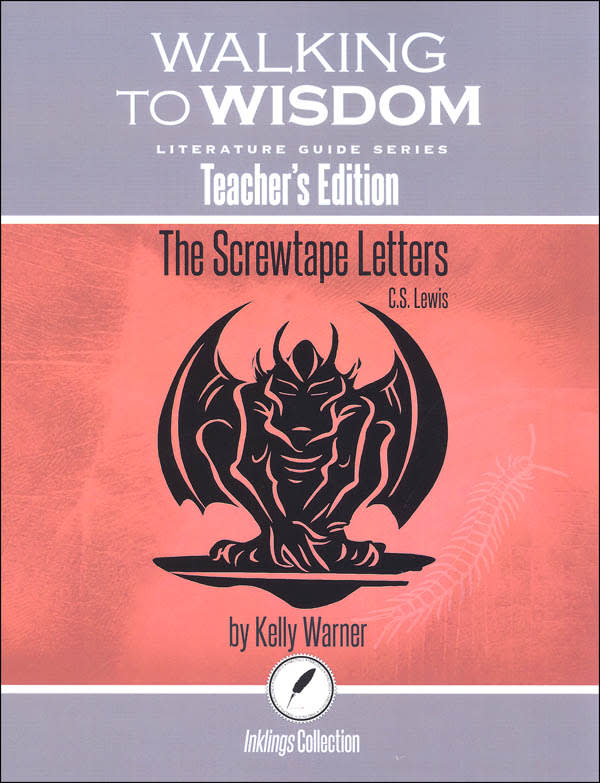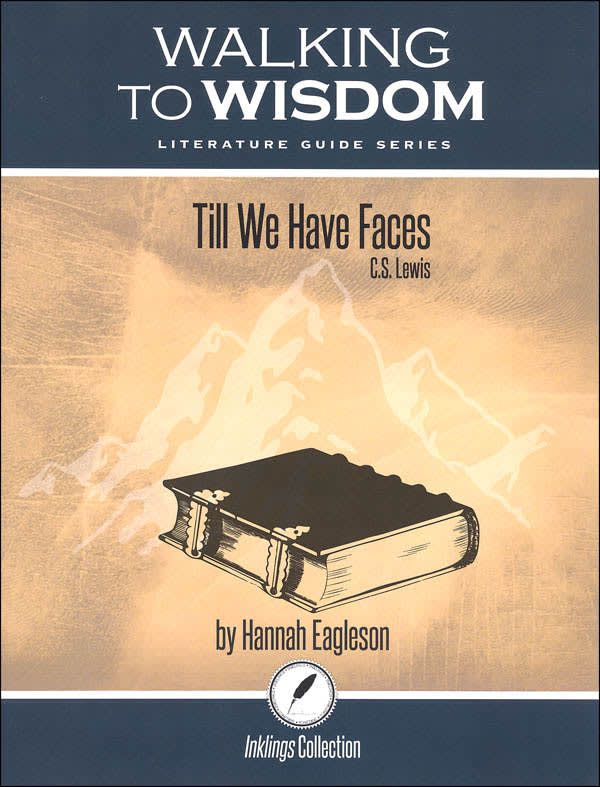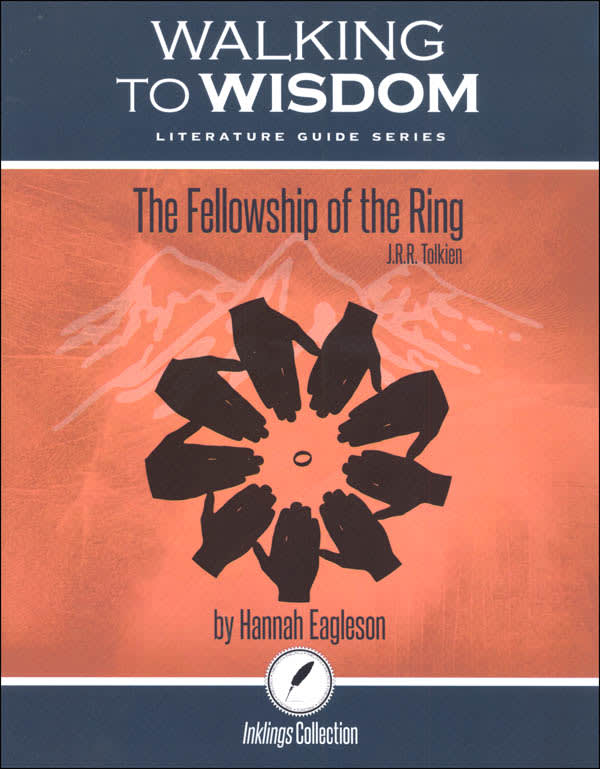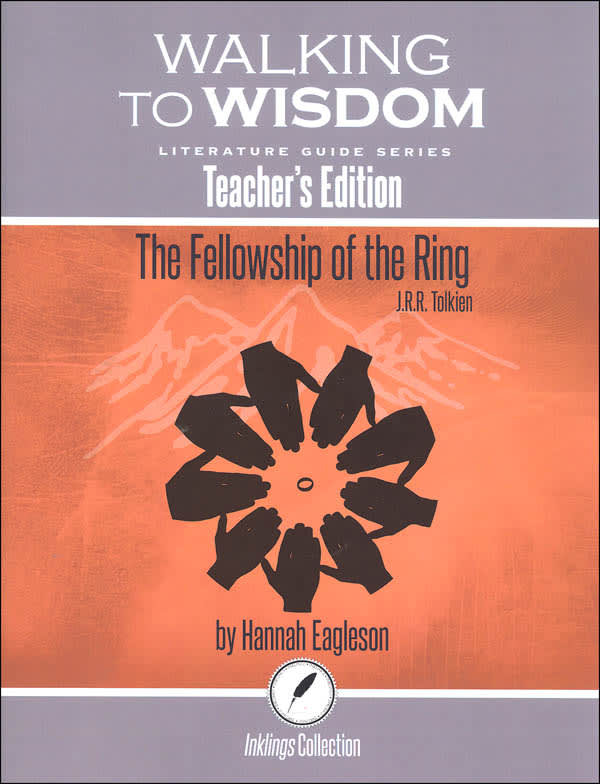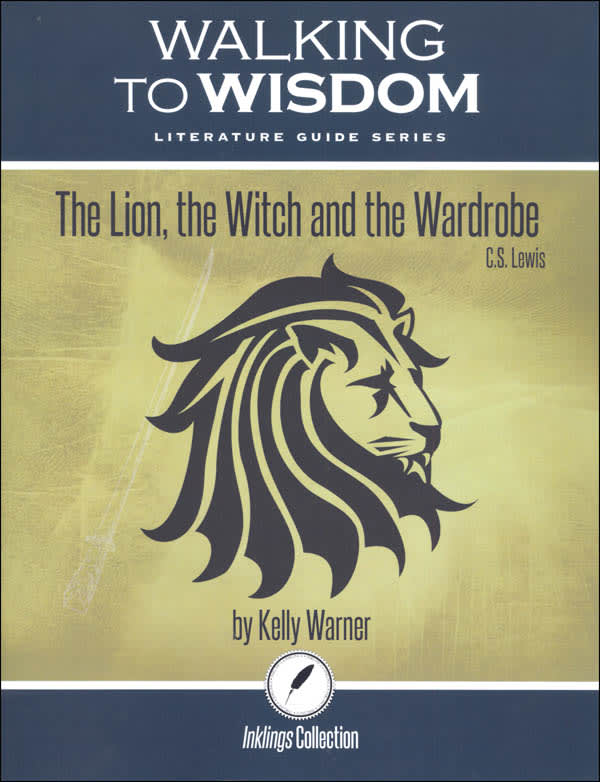Walking to Wisdom Literature Guide Series: Inklings Collection is a series for studying eight different literary works by Inklings authors C.S. Lewis, J.R.R. Tolkien, and Dorothy L. Sayers. This series might be used by students in grades seven through twelve. These guides stand out from most other literature study guides because they delve deeply into philosophical, spiritual, and worldview questions. In addition, the guides occasionally make reference to another one of the books studied in the series, teaching students to make connections The books studied are listed in the recommended order:
The Lion the Witch and the Wardrobe
The Last Battle
The Screwtape Letters
Till We Have Faces
The Man Born to Be King
The Fellowship of the Ring
The Two Towers
The Return of the King
There are a student workbook and a teacher’s guide for each of these studies. Each guide requires the corresponding literary work, and studies are keyed to particular editions of some of these books. You also need access to a few other books and articles for introductory reading and context essay writing at the beginning of each course. Many of the context readings are from other books used within the Inklings Collection while other readings come from Mere Christianity, The Weight of Glory, On Stories: And Other Essays on Literature, and Letters to A Diminished Church (all of which were also written by Inklings authors). A few context readings are available online for free. Some context reading books are used alongside more than one guide, so these supplemental books will likely be used more than once. While you can find the required editions of the books elsewhere, Classical Academic Press sells them.
The brief list of the required books and reading for each guide can be found on the publisher’s website. Click on the guide in which you are interested, then scroll down to the tabs for “Description,” “Specs,” and “Resources.” You’ll find the list under the Resources tab. (The guides themselves list a no-longer-functional URL as the place to find this information.)
You could create a year-long course that covers both literature and composition by using two or three of these guides per year. The amount of time required for each guide might vary greatly depending upon many factors. Younger students will obviously require more time per study guide than older students.
I was really struck by the quality of the questions and activities in these study guides. While there are some comprehension questions, called Reading Questions, the lessons for each chapter of a book take students through very interesting sequence of activities. Students write down great quotes as they read through each chapter. Students present oral narrations as they read each chapter. This is probably best done with a parent or teacher although students in a group class could pair off for narrations. Discussion Questions that follow next require higher levels of critical thinking as students analyze and respond to events in each book. Life Questions – Journaling Assignment sections pose very personal questions about which students will write in their journals. These might even be kept private. Next is space for students to write two discussion questions of their own. Creating discussion questions requires students to deal with the reading on an entirely different level—what else do you think would be interesting to discuss? You might have students write summaries of the chapter in addition to or in place or oral narrations. Chapter summaries are provided in the back of both teacher and student books. While these might be useful, you might find that they are so thorough that they tempt students to skip the book itself.
You will probably want to use some of the additional activities at the back of the book. There is a lengthy “Quotation Identification” section with a quote from each chapter followed by space for students to identify the speaker and the context of the quote. A page of enrichment activity suggestions includes hands-on projects as well as further reading, research, or presentations. Finally, students should write a culminating essay. Essay ideas and prompts are included to help them get started. Sample student essays are in the teacher’s editions.
Student books have lines where students can write directly in their workbooks. There’s even space for them to write responses to discussion questions. Still, they might sometimes need additional space for writing or they might prefer to type all of their responses. Parents or teachers can decide how they want to handle written work.
The guides are ideal for group classes because of the discussion questions, but a student might also work on his or her own. In “The Elements in the Literature Guide” found in both the teacher’s editions and the student workbooks it says, “Depending on your level, learning needs, or preference, the in-depth discussion questions may be written as short answers (one to two paragraphs), discussed with the teacher/fellow students, or simply read to inspire critical thinking.”
I’ve been disappointed by some of the newer literature study guides from other publishers since they seem to stick with comprehension questions, ignoring the intriguing ideas raised by the books themselves. I believe that a large part of the value of reading great books is wrestling with the ideas and stories, and this series seems to be one of the best I’ve ever seen for accomplishing this.




